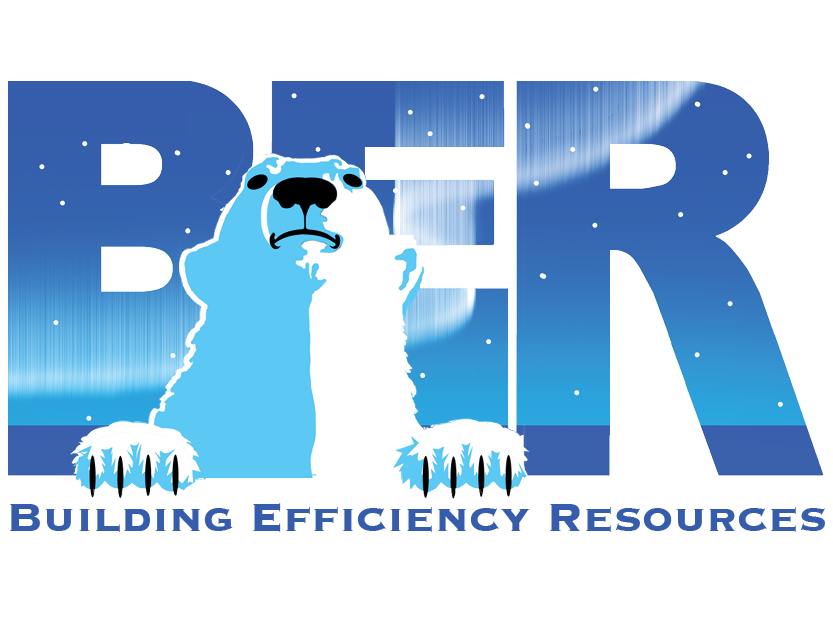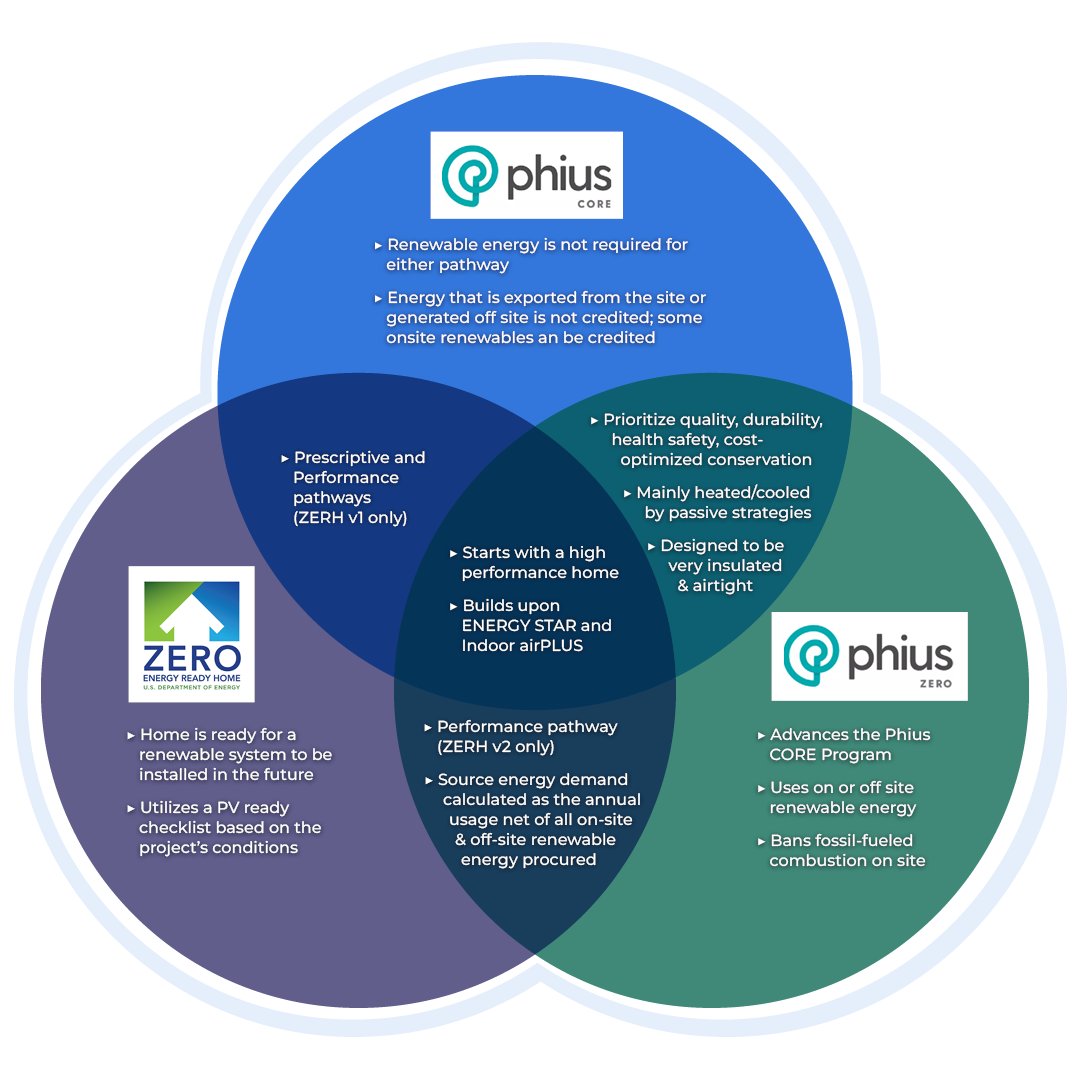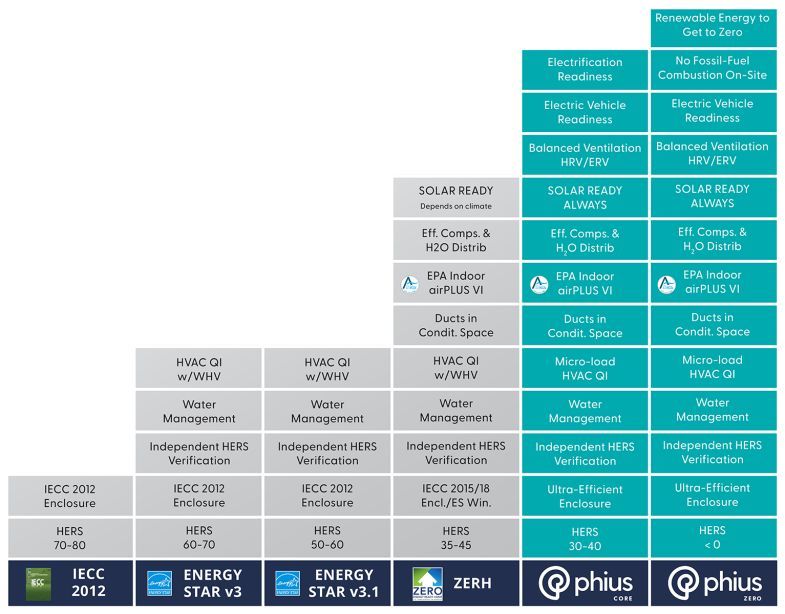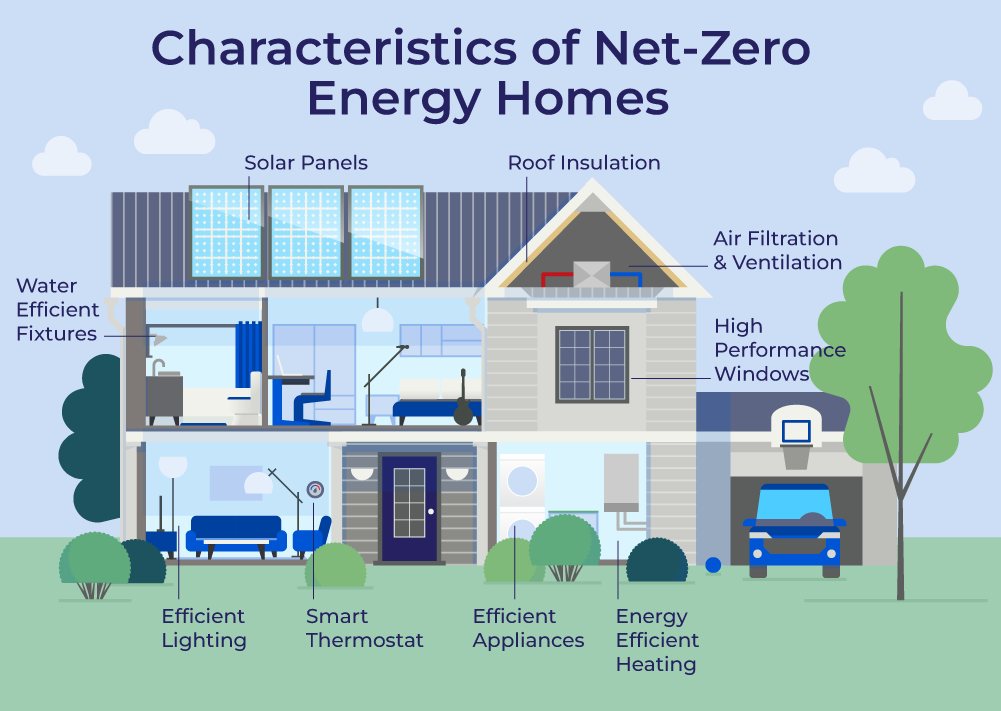Zeroing-in On Net-Zero Energy Homes

Let’s understand that there is not a single, universally agreed upon definition of Net Zero Energy Buildings; as the zero-energy enigma lingers, the terms Zero Energy Building (ZEB) and Net Zero Energy Building (NZEB) can be used interchangeably. The goal is to achieve an end result of zero energy. The Department of Energy (DOE) defines net zero energy as, “An energy-efficient building where, on a source energy basis, the actual annual delivered energy is less than or equal to the on-site renewable exported energy.” NZEBs/ZEBs create a balancing effect between energy being produced and the amount of energy being consumed by starting with an energy efficient building assembly and fenestrations and high-performance heating, cooling, and ventilation systems to keep energy consumption as low as possible (zeroenergyproject.com). If there is enough onsite power production to offset energy use, you have a zero-energy building.

Alternative zeros
As if defining “zero” isn’t hard enough, the building efficiency industry contains a plethora of zeros; zero cost, zero emissions, net zero site energy, and net zero source energy to name common examples. It is important to understand the variety of zeros that can shape the boundaries in which you define zero energy buildings.
The National Renewable Energy Laboratory recognizes that ZEB can be defined in multiple ways depending on the projects goal, values, and/or design.
- If the building owner priorities zero cost, then the amount utility companies pay building owners for renewable energy exported to the grid equals the amount the owner, if applicable, pays to utility companies for energy drawn from the grid.
- Zero emissions projects reduce emissions through efficient on or offsite renewable energy to offset emissions.
- A net zero site energy or net zero source energy building produces at least as much site or source energy, respectively, as it uses in a year (wbdg.org).
Regardless of defining each type of zero, minimizing building energy use through building design should be a priority in all NZEB/ZEB projects.
Does my HERS Index Rating indicate whether I have a net zero energy home?
Your HERS Index Rating provides you with a good estimate indicating where on the energy efficiency scale your home lies. The building’s occupancy and plug loads are based on average consumption data that may over or under predict actual energy consumptions, so homeowner education is highly important to ensure the home is actually achieving net-zero.
Only a net-zero energy home will have a HERS Index Rating score of zero. The lower the HERS Index score, the closer you are to achieving a zero-energy home. A negative HERS score means the project is not only net-zero energy, but also net-positive energy since the project produces more energy than it consumes. This energy can be stored on-site for later use or, in some jurisdictions, sent to the grid.
What is the difference between phius CORE, phius ZERO and ZERH?
There are several certification programs in the US that guide architects, builders, and project teams in the direction of achieving zero energy and recognize the high caliber of achievement. Some of the most well-known programs include Phius Core, Phius Zero and the DOE’s Zero Energy Ready Homes (ZERH) Program. These programs are designed to provide high performance building standards that are geared towards achieving significant energy savings.
Any residential building begins with ensuring the design complies with base level local or state energy codes. These codes, however, don’t really get us to “zero energy”, and in the vast majority of cases, not even close! This is where these certification programs come in to guide and incentivize the housing industry with “a clear path for progressively more efficient homes that also ensure high-performance,” (phius.org). These federal programs build on top each other to eventually reach a zero energy home, almost like a staircase!
This sounds nice, but how do I achieve zero energy?
At the heart of every net-zero energy home is a high-performance home. This means beginning with a high-performance design of the building enclosure, ensuring airtightness and balanced ventilation in the building design, optimizing the orientation and placement of glazing, as well as including energy efficient mechanical systems, lighting, and appliances in the home.
Minimizing energy use through efficient building design should be an essential design criterion for all residential buildings and must be the highest priority of all zero-energy projects. Including efficient design strategies, reducing the demand load size, and adding onsite renewables can be extremely effective measures in providing the best energy efficiency results and moving towards the goal of zero energy. Reducing building energy consumption in new construction or existing building renovation can be accomplished through various means including integrated design, energy efficiency retrofits, reduced plug loads, and energy conservation programs.
There are a number of long-term advantages of moving toward ZEBs, including:
- Lower environmental impacts
- Lower operating and maintenance costs
- Increased resiliency to power outages and natural disasters
- Improved energy security
The zero-energy movement is gaining momentum and has become continually more practical as costs for fossil fuels increase and costs for alternative energy technologies decrease. To learn more and engage further with high-performance and net-zero energy programs, enroll in BER’s new Maximizing the 45L Tax Credit: ENERGY STAR and Beyond training covering DOE Zero Energy Ready Homes, EPA Indoor airPLUS, and more!



